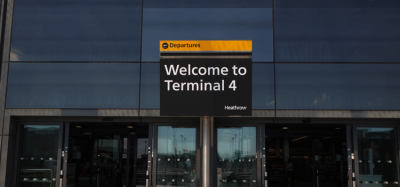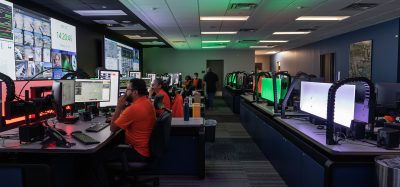Sixty seconds with Steve Batt, Siemens Enterprise Security
Posted: 7 August 2014 | Steve Batt, Market Manager Airports, Siemens Enterprise Security | No comments yet
Steve Batt, Market Manager for Airports at Siemens Enterprise Security, discusses the latest trends in airport security.
What security challenges do the airports of today face?
Airports are in a position where they need to adapt their infrastructure to manage increased and differing passenger and cargo volumes but without compromising security. The need to balance security requirements with the capitalisation principle adopted by today’s airports – with a focus on non-aviation revenue streams and enhancing passenger experience is not straightforward. We have also seen a focus on technology-influenced efficiency gains, with calculable returns in security operations. One of the key aspirations we’re seeing across the industry is the move towards the harmonisation of regulatory policies, and in terms of airport security and a push towards uniform Standard Operating Procedures.
What surveillance solutions can airports develop to help enhance perimeter security?
We’re seeing a need for solutions that combine physical measures with high-resolution video technologies and aligned with intelligent external detection solutions. These include long-range thermal imaging surveillance cameras and intelligent presence or movement detection sensors such as ground radar. Such solutions are best managed through sophisticated platforms which facilitate earliest possible detection and verification. The result is that potential intruders are detected and monitored beyond the critical perimeter boundary and thus contained before they impact and disrupt an airport’s core operations.
Passenger flow is a topical issue. How can airports optimise their infrastructure to help control the flow of passengers in a secure way? And how can airports balance the need for optimum efficiency against customer satisfaction and heavy costs?
Technologies such as flow monitoring and predictive analytics enable airports to capture and access data in real-time; supporting them in making the most effective decisions with regard resource deployment and passenger routing. Examples of technology supporting airport queue and passenger flow optimisation – which also reduce overall operational costs – include the automated validation of boarding passes, automated staff scheduling and dynamic allocation of resources in response to real-time passenger activity. Utilising accurate passenger flow data enables airports to enhance operational efficiency, optimise terminal layouts, and reconfigure retail areas which, in turn, help to generate new revenue models.
How can biometric solutions help to enhance airport security and improve authentication?
There is a more widespread use of biometric verification technology to complement traditional security solutions and to provide an effective yet user-efficient means of providing additional security levels. As biometric solutions become more cost-effective and gain public acceptance, we expect their use to further increase. Several technologies have been used for a number of years – with varying degrees of success. Technologies such as palm vein detection are among the latest being introduced into the market. This technology utilises one of the most effective and widely accepted identification techniques, through the contactless and safe scanning of human vein patterns within the palm of the hand.
We have seen an increase in airports using A-CDM and other centralised solutions. How can the security arena follow this trend?
Airports are typically equipped with many differing risk-based solutions, designed to mitigate specific threats and installed as self-contained entities over a lengthy period of time. The challenge is to ensure that these systems are not only maintained so as to adhere to their original security intentions, but also to collate their alarms and triggers and thereby create a harmonised and centralised platform. These solutions amass the reporting of field-based systems and offer a collective dashboard from which security personnel can make decisions and react accordingly.
You are referring to the Physical Security Infrastructure Management (PSIM) approach?
Precisely. However, this now rather conventional approach is no longer sufficient to meet the aspirations of security managers who must not only maintain required security levels, but also maximise efficiency and ensure regulatory adherence. The latest solutions must also be designed to include the ability to manage automated workflows, resource management and offer an integrated Computer Aided Dispatch and communication platform. These carefully constructed modular systems are designed to mitigate the overall security threats and protect the interests of all stakeholders through the provision of an audited record of all actions. One such example is of course Siemens’ Siveillance Vantage platform, which meets all of these requirements and succeeds in securing the interests of airports around the world.
Biography
Steve Batt is Market Manager Airports at Siemens Enterprise Security. He has over 20 years’ professional experience in the security industry in the fields of project management, sales and marketing, business development and project execution. Steve has been working extensively in Europe and the Middle East with a wide track record in many of the major airports in these regions. For the Enterprise Security business line in Siemens, he supports key airport projects globally with customised solutions and services, and is a frequent speaker at industry conferences focused on a wide range of issues facing security and safety threats in and around airports.
AI in Action: Enhancing Ground Operations at Frankfurt Airport
30 Sept 2025 | 11:00 AM BST | FREE Virtual Panel Discussion
Airports face mounting pressure as passenger volumes grow and turnaround windows tighten. But what if you could see your ground operations in real time, and predict issues before they occur?
Join us for a high-impact virtual panel featuring Frankfurt Airport, FraAlliance, and zeroG – Lufthansa Group’s AI powerhouse, as we explore how AI and computer vision are reshaping airside efficiency, safety, and collaboration.
Meet the experts:
- Pascal Schimanski, Project Lead – Digitalisation, FraPort
- Pauline Nolte, Project Director Strategy & Consulting, FraAlliance
- Christian Ritter, Head of Product & Principal Data Scientist, zeroG
- Moderated by Francesca Vetter, Head of Marketing, zeroG
Register now to ask your questions live and take away practical, proven insights on applying AI at scale in your airport – Register Now – It’s Free!


















